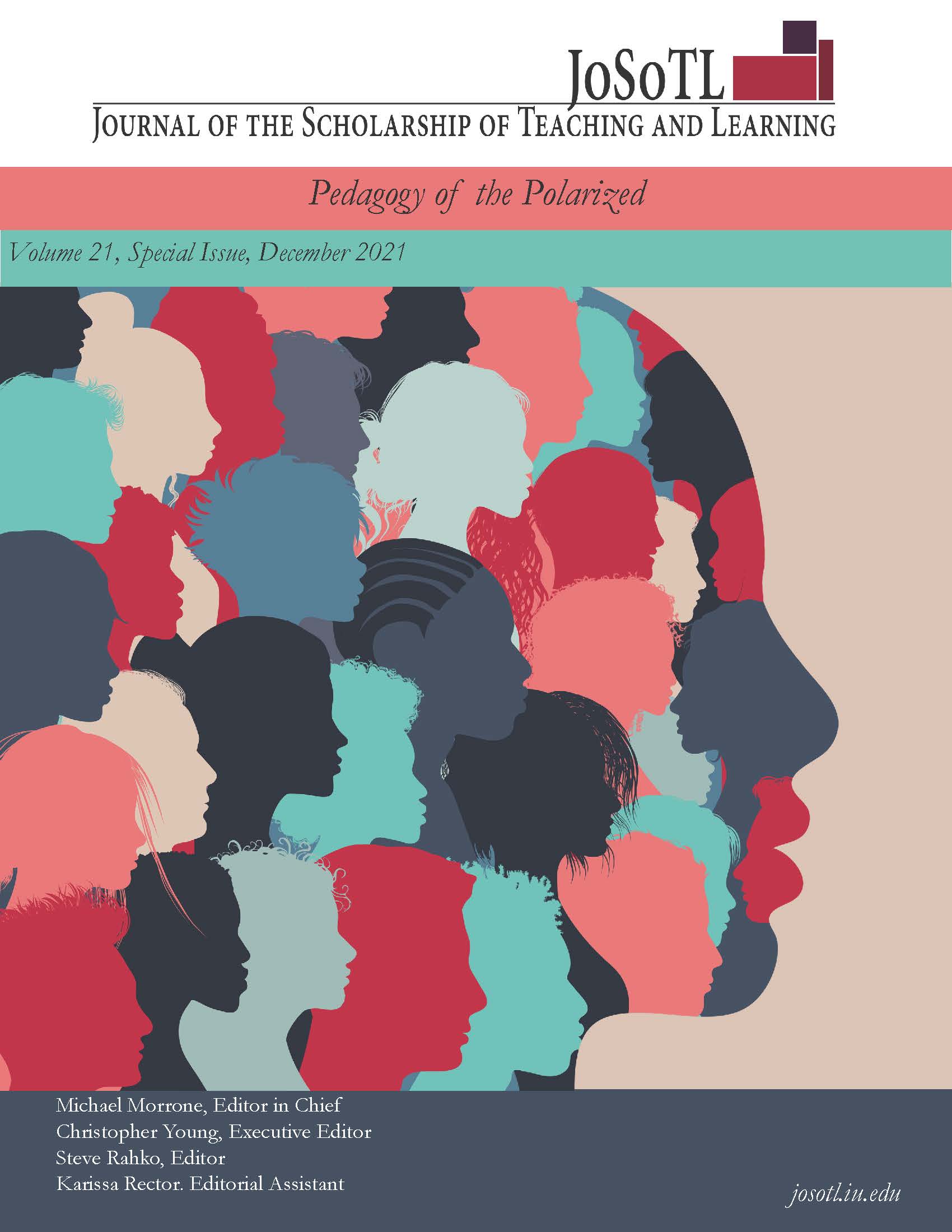Using a Headshot Assignment to Incorporate Critical Theory Into Photojournalism Classrooms
Main Article Content
Abstract
This case study uses a diversity and critical thinking exercise in a photojournalism class to show how journalism educators can incorporate race and gender conversations about ethics and judgment into traditionally skills-oriented courses. It is crucial that journalism students learn how to apply their skills properly in an era of social unrest, inequality, and dwindling media trust. Democratic citizenship and journalism are intertwined, but often the bigger ethical conversations are left out of skills-oriented courses. This can lead to a disconnect between the skills themselves and the responsibility of practicing the skills, especially when it comes to matters of power and representation. The field of photojournalism remains predominately White and male, which makes it all the more crucial for students to interrogate their own biases to ensure ethical coverage of their communities. The assignment asks students to make 36 portraits of strangers, and the subsequent classroom exercise has them confront their inherent biases by looking at the demographics of the people they photographed compared to the general population. Data for this case study consist of observations of the classroom conversations and a reflexive journalism exercise the students completed afterward. Findings indicate this exercise is a successful way to introduce racial and gender considerations as part of photojournalistic ethics and judgment. Students initially neglected to think about representation and diversity in their selection of people to photograph but afterward said they could effectively incorporate reflexivity into their work in an effort to provide more representative imagery and confront their own biases.
Downloads
Article Details

This work is licensed under a Creative Commons Attribution 4.0 International License.
- Authors retain copyright and grant the Journal of the Scholarship of Teaching and Learning (JoSoTL) right of first publication with the work simultaneously licensed under a Creative Commons Attribution License, (CC-BY) 4.0 International, allowing others to share the work with proper acknowledgement and citation of the work's authorship and initial publication in the Journal of the Scholarship of Teaching and Learning.
- Authors are able to enter separate, additional contractual agreements for the non-exclusive distribution of the journal's published version of the work (e.g., post it to an institutional repository or publish it in a book), with an acknowledgement of its initial publication in the Journal of the Scholarship of Teaching and Learning.
- In pursuit of manuscripts of the highest quality, multiple opportunities for mentoring, and greater reach and citation of JoSoTL publications, JoSoTL encourages authors to share their drafts to seek feedback from relevant communities unless the manuscript is already under review or in the publication queue after being accepted. In other words, to be eligible for publication in JoSoTL, manuscripts should not be shared publicly (e.g., online), while under review (after being initially submitted, or after being revised and resubmitted for reconsideration), or upon notice of acceptance and before publication. Once published, authors are strongly encouraged to share the published version widely, with an acknowledgement of its initial publication in the Journal of the Scholarship of Teaching and Learning.
